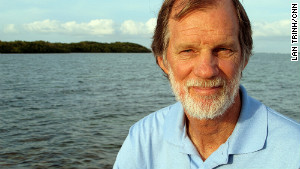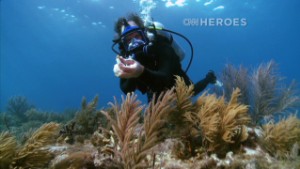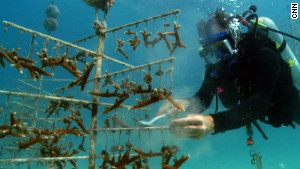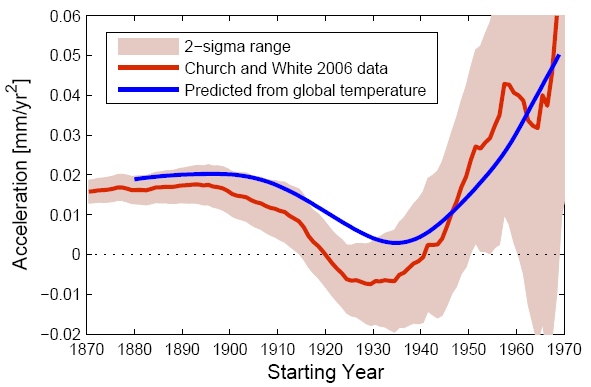From McCleans.CA:
In the company of whales
Tourist brochures refer to Dominica, a tiny Caribbean island between Guadeloupe and Martinique, as “the Nature Island” for its lush vegetation, its postcard-perfect waterfalls, and its plant and animal life. The indigenous Carib Indians called it Waitukubuli (“tall is her body”), which might be a better name: the island’s volcanic peaks jut sharply upwards before falling away into the sea, leaving a deep oceanic basin on its Western side that’s sheltered by the mountainous island.
Shane Gero came here in 2005 looking for sperm whales. There had been reports of sightings around Dominica (pronounced “Domin-eek-a”), including families with multiple babies, but still, he wasn’t too sure what he’d find. “When we got there, they were everywhere,” says Gero, 31, a Ph.D. candidate at Dalhousie University. That year, Gero spent 41 straight days following one family of sperm whales; he’s returned every year since, splitting his time between Dominica, Halifax and his hometown of Ottawa. By now, Gero has spent literally thousands of hours following over 20 families of sperm whales. He knows some of them so well that he can recognize them by sight when they surface, lingering about 15 minutes to breathe and socialize before diving again. He’s even got names for them, like Pinchy, Fingers and Spoon.
Sperm whales are some of the most mysterious animals on Earth. The largest of all toothed whales (males can be 18 m long, and weigh up to 60 tonnes), they have the biggest brains of any known creature. They “see” through dark ocean water using echolocation, emitting a series of clicks that enables scientists to track them with an underwater microphone. (Dolphins and killer whales also use echolocation, detecting a nearby object by bouncing sound off its surface.) Sperm whales’ heads are filled with a waxy substance called spermaceti; some scientists think this serves as an amplifier when whales emit sonar—the most powerful in the world—to find prey. They can dive underwater for up to 90 minutes before surfacing to breathe, and feed on giant squid, which live up to 1,000 m deep. Sperm whales have been found with circular scars on their bodies, wounds from a giant squid’s suction cups.
The Dominica Sperm Whale Project aims to get to know these whales “personally,” Gero says, and study them as individuals. Like Jane Goodall and Dian Fossey did in their groundbreaking research on primates, Gero has followed families of sperm whales from birth to maturity, learning about their daily lives in a way that’s never before been done with large whales that live in the open sea.
Gero’s project follows that of other pioneering whale scientists, like his mentor, Dalhousie professor Hal Whitehead, a renowned expert in sperm whales—and on the West Coast, John Ford, whose study of killer whales has redefined our understanding of that animal, too. Whales, it seems, have distinct dialects, complex relationships, and a set of traditions passed down between generations—what one could only term a culture, or as Gero sees it, a “civilization.”
As recently as 30 years ago, most of what we knew about the life of sperm whales came from the whaling industry, and even Moby Dick. There were hints that these whales had some kind of social structure—whalers tended to find large males roaming near the poles, often alone, while females and babies were spotted together in warmer waters—but “nobody had really tried to study their behaviour,” Whitehead says. In 1974, Whitehead, who comes from England, started working with humpback whales off Newfoundland; he moved to Canada in 1981, and by 1982, was studying sperm whales. These animals live in deeper waters than humpbacks, but Whitehead adapted many of the same techniques to them. “We could identify individual whales using pictures of their tails,” he says. By using underwater hydrophones, “we could follow them by listening.”
By listening, Whitehead and other scientists opened a window onto the remarkably nuanced societies that exist within our oceans. Sperm whales communicate with Morse code-like patterns of clicks, called codas, which sound a bit like fingers snapping, and vary between regions. (Echolocation clicks are much louder, Gero says, comparable to hand claps.) Whales in the Pacific and the Caribbean, for example, use different codas; according to Gero, some parts of the Pacific Ocean are home to “multicultural whale societies” where different dialects are spoken together by families living in the same place. It seems that each animal is born into a dialect, which it will use for its entire life; whales will seek out those that share their own, even in these multicultural zones, Gero says, recognizing them in the same way we’d be able to guess a person who uses the word “lorry” instead of “truck” is probably British.
Vocal clans can cover thousands of kilometres, Whitehead says, and include thousands of sperm whales. These clans are “like human ethnic groups, and tend to be very culturally different.” Whales in different clans will exhibit different foraging patterns, for example, or travel different routes. Cultural differences might help explain why Dominica’s sperm whales have been ideal for study: for some reason, they don’t roam as far as Pacific sperm whales tend to do.
The newest work suggests that codas might even vary individually. Working with Gero and Whitehead, a team from the University of St. Andrews analyzed a coda made by sperm whales around the world, which consists of five consecutive clicks, and found subtle variations between whales. They believe sperm whales might emit their own coda as a personal identifier—in other words, a name. “We’re still in the very early stages,” says Ricardo Antunes of St. Andrews, lead author on that paper, “but our gut feeling is, they might use it to introduce themselves.”
Sperm whales have evolved these complex social structures, Gero and Whitehead believe, for basic physiological reasons: nursing calves can’t dive deeply with their mothers, so—for the 45-odd minutes the mother goes below the surface, hunting for squid—they’re often left with a babysitter. “In the Caribbean, usually it’s the mom’s closest relative,” Gero says. (Calves nurse for at least three years.) As a result, “their family members become really important,” he continues. “The expectation is, ‘I’ll help you because you need me, and when I have a baby, I’ll need you, too.’ ”
One might wonder why the father doesn’t play this role, but for reasons that aren’t really understood, male sperm whales are solitary creatures; sometime between the ages of 6 and 12, they leave their birth families, eventually heading for the poles in either direction. Researchers used to think this was some sort of “testosterone-y walkabout,” Gero says, but what he’s seen in Dominica suggests they might not leave by choice. Gero has been observing a maturing male calf gradually being ostracized by his family. It was last seen following them at a distance, and soon, he believes, this young male will be gone for good. At age 30 or so, male sperm whales return to the tropics to breed, then leave again. (They can live into their seventies.) “There used to be this notion of one enormous male with his attendant females,” Whitehead says, but that was mostly based “on whalers’ wishful thinking.” Females seem to make picky mates. “We’d follow a group around, and then a male comes in, and the females all dive off,” Whitehead says. “Then another male comes in, and they swim up around him, touching him and stroking him. It’s more about female choice.”
Gero is now trying to find out how baby sperm whales acquire a natal dialect from their mothers and babysitters. “We know babies babble at first,” he says, and then gradually pick it up. Pinpointing just how long this takes, he believes, might help us understand how complex the dialect is.
Gero and Whitehead aren’t the first to wonder if whales might have a culture of their own. In the 1970s, John Ford—then a graduate student at the University of British Columbia—was studying killer whales off the B.C. coast, and started asking some of the same questions. Back then, the notion of culture among whales “wasn’t even controversial,” says Ford, now a whale research scientist with the Pacific Biological Station of the Department of Fisheries and Oceans. “There was no precedent for it.”
Unlike sperm whales’ patterns of clicks, killer whales emit all sorts of noises (including clicks for echolocation). Their communication signals are loud and “metallic-sounding,” Ford says, like a “squeaky gate hinge.” As he set out to understand these cries, Ford made some startling discoveries. Not only do different populations make different calls, he found; dialects can vary strongly between family groups. “It’s not just an accent,” he says. “Some sound like a different species, even in the same waters.” Ford began to think of these as a set of behavioural traditions passed down for generations, an idea that Whitehead and Gero have built upon.
In some respects, their work is very different: Gero is intently focused on a small population of whales, while Ford and his team are following hundreds of animals, looking at patterns over time. Since 1973, the DFO has taken an annual census of B.C.’s northern resident killer whale population, and since 1976, has worked with the U.S. Center for Whale Research to follow southern resident killer whales, too. According to Ford, over 80 per cent of the resident population alive today was born since the study began, and so has been tracked since birth. With decades of data, “our understanding of killer whales has changed dramatically,” he says. Pacific Northwest killer whales are now probably the best-studied group in the world, and we know a great deal about the behavioural traditions that define them throughout their lives.
Three types of killer whales live off the B.C. coast: residents, transients and offshore whales. “They’re born into these groups, and there’s never any movement between them,” says Lance Barrett-Lennard, a research scientist at the Vancouver Aquarium Marine Science Centre and, like Ford, an adjunct professor at UBC. These groups have different social structures, eat different foods and communicate using different dialects. “We’re almost positive these differences are culturally maintained,” he says, and they’re deeply ingrained. Residents feed on Chinook salmon, while transients eat marine mammals, like seals; offshore whales eat sharks and fish—and they aren’t likely to try new foods. In captivity, if a transient killer whale is fed salmon, it often won’t take a bite. They’re like humans that way: what’s considered a delicacy in some cultures, like edible insects, will have others turning up their noses.
Like sperm whales, resident killer whales belong to tight-knit matrilineal families, although theirs include male members. Still, “females are the glue that holds them together,” says Barrett-Lennard. Two or three generations will live together, including “grandma, her sons and daughters, and grandkids.” Killer whales are one of the extraordinarily few species in which females stop breeding relatively early in their lifespan—in other words, killer whales experience menopause. (Pilot whales do, too.) Researchers have hypothesized this creates a “grandmother role” for older whales, who then help out the younger females.
These tight bonds come in handy when taking down large, powerful prey. Last year, in Antarctica, Robert Pitman of the U.S. National Oceanic and Atmospheric Administration witnessed 30 killer whales hunt and kill a minke whale. “The minke whale was a lot faster, but they took turns with it,” chasing it for 45 km, he says. An individual killer whale couldn’t catch a minke whale on its own, “but if you’re helping your family members,” Pitman says, “it’s different.”
He and others are now identifying several new populations of killer whale in Antarctica. Cultural differences between groups seem to be so entrenched that some think there might not be just one species of killer whale, but many. “They don’t interbreed, and haven’t for 100,000 years or more,” Pitman says. “But is it because they can’t interbreed, or they won’t? When you deal with intelligent, social animals, it’s hard to know what’s going on.”
Gero talks comfortably about the notion of “whale culture,” “whale society,” even “whale civilization.” When asked if these animals have individual personalities, though, he hesitates. “Personality is a tough one,” he says. “As a scientist, I don’t think we know enough to say.” Even so, he’s witnessed individual quirks in how the Dominica whales behave, and “as someone who’s spent thousands of hours with them,” he says, “there’s no doubt they’re individual beings.”
Some scientists argue that whales might resemble us as closely as the great apes: cetacean brains are highly sophisticated, especially in areas involved in communication and cognition. Dolphins have managed to recognize themselves in a mirror, and even use it to inspect parts of their bodies. Mother pilot whales have been observed carrying a dead baby for days, “and there’s no reason that would be, other than grieving,” Gero says. If he and others are right, whales even have their own complex cultures that define everything from their diet and dialect to family bonds, just as human cultures do.
Given the current state of our oceans, it’s a sobering thought. A major new report from leading marine scientists recently suggested that Earth’s oceans could be entering a mass extinction, stressed to their limit by climate change, overfishing and pollution, to name just a few threats. This is a terrifying prospect for every scientist who works with marine life—and for all of us who live on this planet, since no one would be unaffected. Gero sees it as his duty to let people know about sperm whales, “which come from a part of the ocean that’s least understood,” he says. Even so, his work describes some of our planet’s most enigmatic creatures in surprisingly familiar terms.










